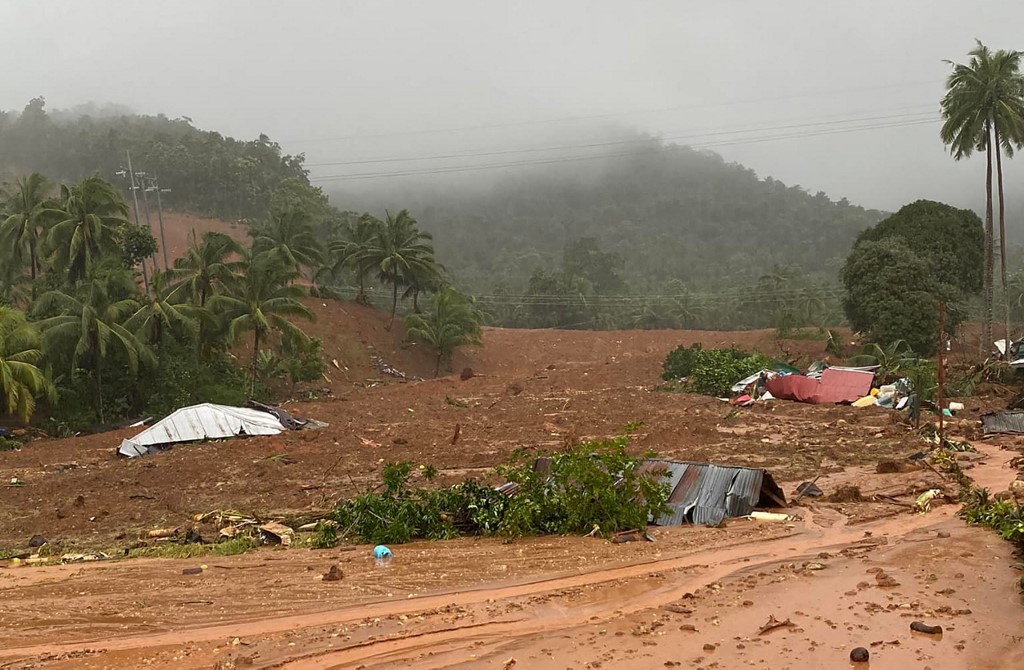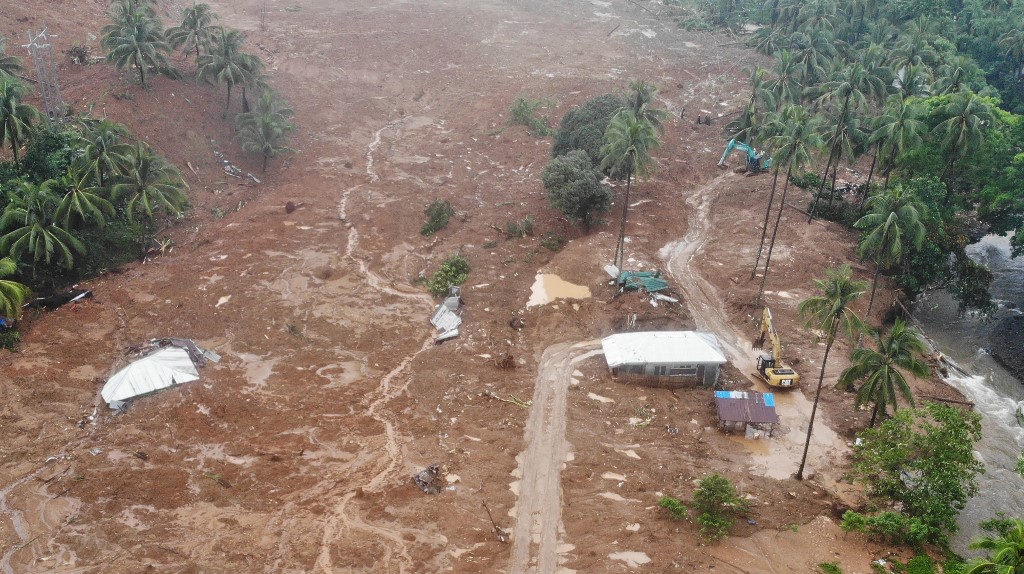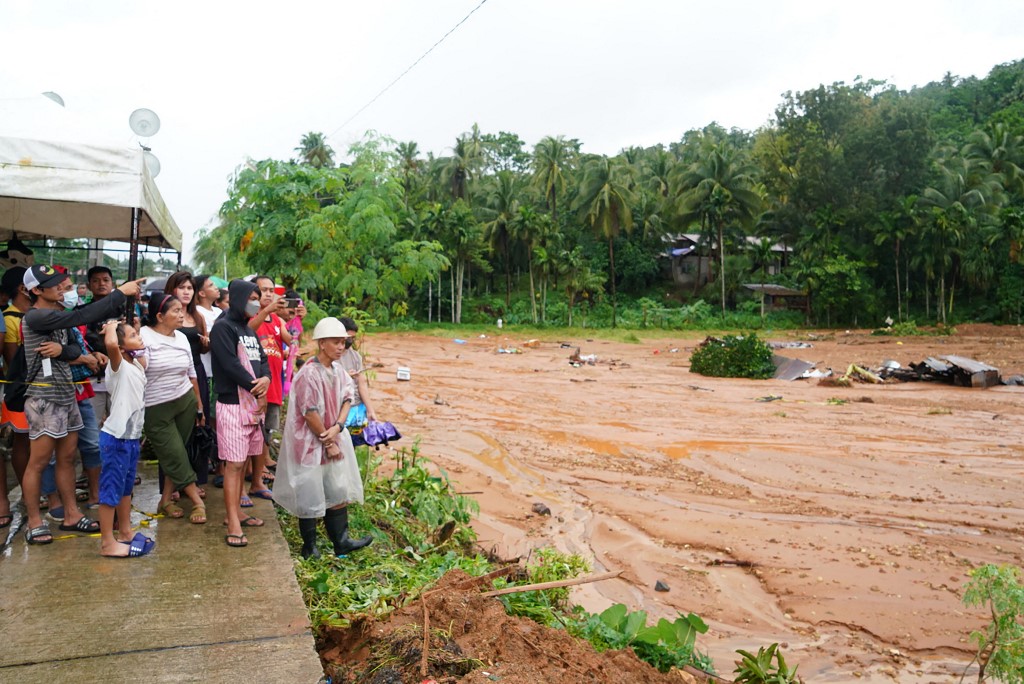
by Bobbie Alota
© Agence France-Presse
BUNGA, Philippines (AFP) — Rescuers hampered by mud and rain on Tuesday used their bare hands and shovels to search for survivors of landslides that smashed into villages in the central Philippines, as the death toll from tropical storm Megi rose to 42.
Tens of thousands fled their homes as the storm pummelled the disaster-prone region in recent days, dumping heavy rain that flooded houses, severed roads and knocked out power.
At least 36 people died and 27 were missing after landslides slammed into multiple villages around Baybay City in Leyte province — the hardest hit by the storm — local authorities said. Just over 100 people were injured.
Three people were also killed in the central province of Negros Oriental and three on the main southern island of Mindanao, according to the national disaster agency.
The death toll is expected to rise.
Rescue efforts continued under the cover of nightfall Tuesday in Leyte province’s Pilar village, after an avalanche of mud and earth pushed most of the houses of about 400 residents into the sea.
“The initial estimate is that 80 percent of the houses were washed out,” Reinz Corbeza, a civil defence official of Abuyog municipality — which includes Pilar — told AFP.
He added that about 50 people had survived or been rescued by boat after roads to Pilar were cut off by landslides.
Most of the confirmed deaths in Leyte were in the mountainous village of Mailhi, near Baybay City, where 14 bodies were found after a “mudflash” buried homes, Army Captain Kaharudin Cadil told AFP.
“It’s supposed to be the dry season but maybe climate change has upended that,” said Marissa Miguel Cano, public information officer for Baybay City.
Cano said the hilly region of corn, rice and coconut farms was prone to landslides, but they were usually small and not fatal.

‘Mudflash’ burying homes
Drone footage showed a wide stretch of mud that had swept down a hill of coconut trees and engulfed Bunga, another community devastated by the storm.
At least seven people had been killed and 21 villagers were missing in Bunga, which was reduced to a few rooftops poking through the mud.
Apple Sheena Bayno was forced to flee after her house in Baybay City flooded. She told AFP her family was still recovering from a super typhoon in December.
“We’re still fixing our house and yet it’s being hit again,” she said.
Rescue efforts were also focused on the nearby village of Kantagnos, which an official said had been hit by two landslides.
Kantagnos resident Daniel Racaza, 26, said he was asleep when a wave of mud and water swept over the riverside community.
He managed to escape with his boyfriend and 16 relatives, but an aunt was caught in the torrent.
“I only managed to save my cellphone and we have nothing to go back to,” Racaza told AFP by telephone from a high school where they are sheltering.
Some other residents also fled in time or were pulled out of the mud alive, but four villagers have been confirmed dead and many are still feared trapped.
A Philippine Coast Guard video on Facebook showed six rescuers carrying a mud-caked woman on a stretcher, while other victims were piggybacked to safety.
“We’re looking for many people, there are 210 households there,” Baybay City Mayor Jose Carlos Cari told local broadcaster DZMM Teleradyo.

First major storm of 2022
The military has joined coast guard, police and fire protection personnel in the search and rescue efforts, which have been hampered by bad weather
National disaster agency spokesman Mark Timbal said landslides around Baybay City had reached settlements “outside the danger zone”, catching many residents by surprise.
Megi is the first major storm to hit the country this year.
Whipping up seas, it forced dozens of ports to suspend operations and stranded more than 9,000 people at the start of Holy Week, one of the busiest travel periods of the year.
The storm comes four months after super typhoon Rai devastated swathes of the archipelago nation, killing more than 400 and leaving hundreds of thousands homeless.
Scientists have long warned typhoons are strengthening more rapidly as the world becomes warmer due to climate change.
The Philippines — ranked among the most vulnerable nations to its impacts — is hit by an average of 20 storms every year.
© Agence France-Presse








